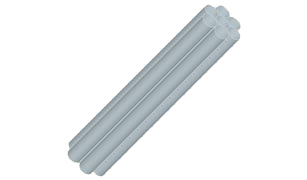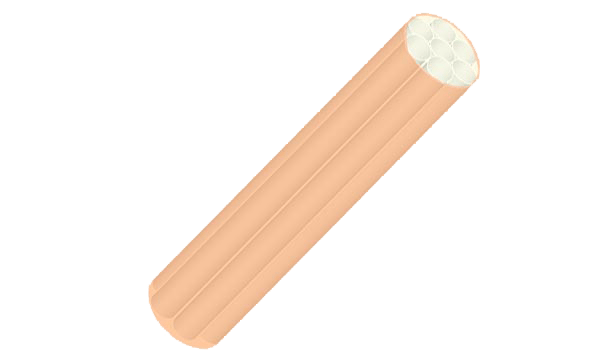What Are Composites?
A composite is a material made from two or more different materials that, when combined, are stronger than those individual materials by themselves.
Simply put, composites are a combination of components. In our industry, composites are materials made by combining two or more natural or artificial elements (with different physical or chemical properties) that are stronger as a team than as individual players. The component materials don’t completely blend or lose their individual identities; they combine and contribute their most useful traits to improve the outcome or final product. Composites are typically designed with a particular use in mind, such as added strength, efficiency or durability.
What are composites made of?
Composites, also known as Fiber-Reinforced Polymer (FRP) composites, are made from a polymer matrix that is reinforced with an engineered, man-made or natural fiber (like glass, carbon or aramid) or other reinforcing material. The matrix protects the fibers from environmental and external damage and transfers the load between the fibers. The fibers, in turn, provide strength and stiffness to reinforce the matrix—and help it resist cracks and fractures.
Fiber

Provides strength and stiffness (glass, carbon, aramid, basalt, natural fibers)
Matrix

Protects and transfers load between fibers (polyester, epoxy, vinyl ester, others)
Fiber Composite Matrix

Creates a material with attributes superior to either component alone
In many of our industry’s products, polyester resin is the matrix and glass fiber is the reinforcement. But many combinations of resins and reinforcements are used in composites—and each material contributes to the unique properties of the finished product: Fiber, powerful but brittle, provides strength and stiffness, while more flexible resin provides shape and protects the fiber. FRP composites may also contain fillers, additives, core materials or surface finishes designed to improve the manufacturing process, appearance and performance of the final product.
Natural and synthetic composites
Composites can be natural or synthetic. Wood, a natural composite, is a combination of cellulose or wood fibers and a substance called lignin. The fibers give wood its strength; lignin is the matrix or natural glue that binds and stabilizes them. Other composites are synthetic (man-made).
Plywood is a man-made composite that combines natural and synthetic materials. Thin layers of wood veneer are bonded together with adhesive to form flat sheets of laminated wood that are stronger than natural wood.
Are plastics composites?
Not all plastics are composites. In fact, most plastics—the ones used in toys, water bottles and other familiar items—are not composites. They’re pure plastics. But many types of plastic can be reinforced to make them stronger. This combination of plastic and reinforcement can produce some of the strongest, most versatile materials (for their weight) ever developed by technology.
Polymer resins (such as polyester, vinyl ester, epoxy or phenolic) are sometimes referred to as plastic.
By any other name…
Many terms are used to define FRP composites. Modifiers have been used to identify a specific fiber such as Glass Fiber Reinforced Polymer (GFRP), Carbon Fiber Reinforced Polymer (CFRP), and Aramid Fiber Reinforced Polymer (AFRP). Another familiar term used is Fiber Reinforced Plastics. In addition, other acronyms have been developed over the years and their use depended on geographical location or market use. For example, Fiber Reinforced Composites (FRC), Glass Reinforced Plastics (GRP), and Polymer Matrix Composites (PMC) can be found in many references. Each of the aforementioned terms means the same thing: FRP composites.
